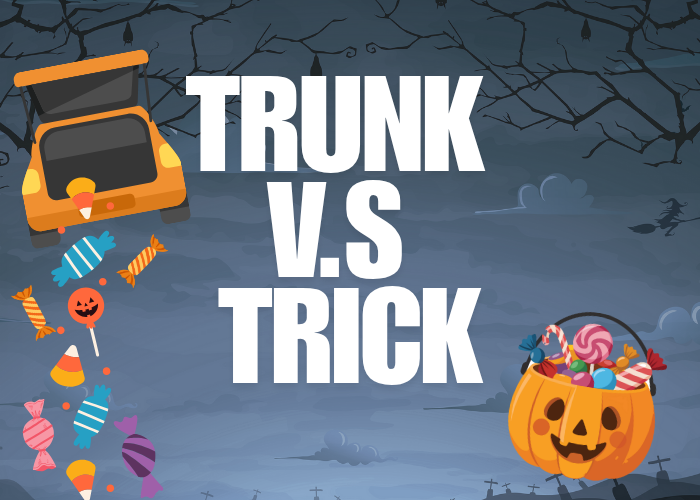Doesn’t it feel like each year there are less people outside trick or treating and more people doing trunk or treating? As we are midway through the 2020s, fewer children are trick-or-treating, with many families shifting their focus to indoor Halloween events for safety as the evening progresses.
A rise in trunk-or-treating is occurring in places like churches, elementary schools, grocery stores and fairgrounds. Trunk or treating involves participants lining up their cars, opening their decorated trunks and handing out treats. This creates a sort of mini-Halloween where children—especially those who are usually too young to go out and do long stretches of trick or treating—can now get as much candy and have fun with other children, while parents can supervise in a centralized location.
Algebra II teacher Scott Baker says, “People come to my neighborhood and target specific street specifically because they are targeting places where they could get a lot of candy like specific street or trunk or treats so they can get as much candy as possible.”
However, as trunk or treating rises in popularity, some parents are seeing a decrease in numbers of children who pass by their houses each year, as more parents choose trunk or treating as a safer, more definite alternative to the usual door to door tradition. This trend causes families to target specific places known for high participation or full-sized treats, leading to people wasting their money on candy that’ll never be given out.
As more parents choose trunk or treating over traditional trick or treating, the question arises: does the spirit of the holiday die as there are fewer kids dressing up and going out on Halloween night? Less people now participate in trick or treating as trunk or treating becomes popular, especially with newer parents of younger children.
Sophomore Austin Dickey says, “When going out trick or treating like last year I saw more people my age instead of people who are younger than me lately.”









